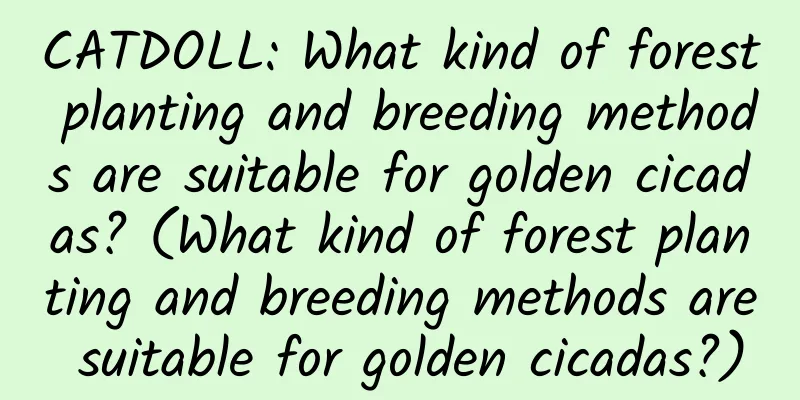CATDOLL : CATDOLL: What are the main types of locusts?

1. What are the main types of locusts?Locust species: Large-pad-pointed-winged locust (small-spotted-pointed-winged locust) has a body length of 23-32 mm for females and 15-27 mm for males. The body color varies greatly, usually yellow-brown, brown or dark brown, sometimes yellow-brown. Stupid locust: The body length of females is 34-48 mm, and that of males is 28-40 mm. The body is thick and clumsy, with thick and dense grains and ridges on the body length, usually yellow-brown, brown or dark brown. Yellow-legged small eastern locust: The body length of females is 30-42 mm, and that of males is 23-31 mm. The top of the head is slightly round, and there is an "X"-shaped light-colored pattern on the back of the pronotum. The body color is green, yellow-brown, brown, etc. Short-fronted locust: The body length of females is about 48 mm, and that of males is 31 mm fusiform. There are small light yellow grains on the body surface, the head is pointed and the face is extremely tilted, and the body color is green or yellow-brown. Chinese rice locust: Female body length is 28-41 mm, male body length is 22-33 mm, head is flat, with dark brown bands between the two compound eyes, head is thrust forward, face is tilted at a large angle, body color is green, yellow-green or yellow-brown with luster. Short-winged locust: Female body length is 25-43 mm, male body length is 13-22 mm, central ridge and side ridge are obvious, with 3 obvious horizontal grooves, body color is brown or dark brown. Japanese yellow-ridged locust: Female body length is 55 mm, male body length is 42 mm, with many hairs on the ventral surface and under the legs, body color is yellow-brown, and the back along the midline from the top of the head to the wing tip is yellow, so it is also called yellow-ridged locust. The body length of the flower-legged green-striped locust (Yunhan sharp-winged locust) is 33 mm for females and 25 mm for males. There is an "X"-shaped pattern on the back of the pronotum, the face is extremely inclined, the body is slender, and it is green or withered grass color. The cotton locust (Daqing locust): The body length of females is 56-81 mm, and that of males is 43-56 mm. The body is thick, with dense and long hairs and thick punctures, and the body color is turquoise or yellow-green. The body length of the large red-winged locust (Xiaoshalazi) is 33-44 mm for females and 22-28 mm for males. The top of the head is round and wide, higher than the pronotum, and there are often inconspicuous light spots under the compound eyes. The body color is dark brown or yellowish brown. Locusts belong to the family Acrididae of the order Orthoptera, a general term for more than 4,500 species. More than 400 species of locusts are agricultural and forestry pests, and the "king of locusts" is the migratory locust that people are afraid of. There are three species of migratory locusts in my country, namely the East Asian migratory locust, the Asian migratory locust and the Tibetan migratory locust. In the Compendium of Materia Medica by Li Shizhen of the Ming Dynasty, a total of 76 edible and medicinal insects were recorded. Locusts are an Orthoptera insect. They have a pair of well-developed membranous inner wings that are good at flying, and their hind legs are well-developed and good at jumping. Due to the vast territory and complex terrain of Xinjiang, the climate in the north and south of Xinjiang is very different, and the vegetation types are diverse, so there are many species of locusts and the number is amazing. According to Mr. Chen Yonglin, a locust expert, more than 160 species of locusts have been found in Xinjiang, of which 128 species are mainly distributed in the north of Xinjiang and 52 species are also distributed in the south of Xinjiang. So many locusts have led to constant locust plagues in Xinjiang. Xinjiang locusts all belong to the family Acrididae, which is divided into subfamily Migratory Locust, Subfamily Stupid Locust, Subfamily Cone-headed Locust, Subfamily Leprosy Locust, etc. In addition to the Asian migratory locust and bamboo locust, there are 12 species of ground locusts that do not migrate in groups. Locusts are vegetarians that mainly feed on grass plants. The main types that cause harm to agriculture include: Asian migratory locust, small pad sharp-winged locust, Italian locust, etc. Locusts that cause harm to pastures include: Siberian locust, pasture locust, small car locust, etc. Earth locusts Earth locusts refer to locusts other than migratory locusts. They are numerous, widely distributed, and have a diverse diet. Due to differences in natural environments in different places, their colony results and occurrence and damage characteristics are different. Such as the Chinese rice locust and the short-headed locust. Appearance characteristics of rice locusts: body length of females is 21-31mm, and males are 26-39mm. The back of the body is gray-brown; the abdomen and legs are green. Ecological habits: This species is a very common locust in the grass on plains and low-altitude areas. Adults can be seen almost everywhere except in winter. It mainly feeds on the leaves of grass plants and was a major pest of rice in the early days. The East Asian migratory locust has a very wide distribution area in my country, from south of 42° north latitude to the South China Sea and Yunnan, from southern Gansu and Sichuan in the west, to the Bohai Sea, the Yellow Sea coast and Taiwan in the east. Among them, the North China Plain north of the Yangtze River, namely the low-lying areas in the middle and lower reaches of the Huaihe River Basin, the Yellow River Basin and the Haihe River Basin, mainly including five provinces including Henan, Shandong, Hebei, Jiangsu, Anhui and Tianjin and its affiliated counties are the main places of occurrence. 2. The living habits of locustsThe living habits of locusts: 1. The adults have the same diet as the locust nymphs, both are herbivorous, and the adult stage has a strong nutritional supplement, accounting for more than 75% of the total food intake in their lifetime. They chew plant leaves and flower buds with their chewing mouthparts to make notches and holes. In serious cases, they will eat up the leaves and flower buds of a large area of plants, causing significant economic losses to agriculture, forestry and animal husbandry. 2. Locusts feed on plant leaves, and like to eat reeds, barnyard grass, white grass, dogtooth grass and wormwood, shrimp grass and sea salicornia. Some locust species are omnivorous and also eat dead insects, even the dead bodies of their own kind. 3. Locusts do not have the habit of clustering and migrating. They often live in one place and are generally scattered around fields and in grass. They eat grass plants, so they can also cause certain harm to rice and bean crops. 4. Some locusts usually use their wings to make "music" to attract mates and tell other male locusts to leave. Different types of locusts make "music" in different ways. Some use the forks on their hind legs to scrape the edges of their front wings to make sounds, or rub their wings against each other to make sounds. Additional information: Locust control methods: 1. Develop water conservancy to ensure that there will be no disasters such as drought or flood. 2. Reclaim large areas of wasteland and plant crops to change the habitat of locusts and reduce the area of the locust outbreak. 3. Plant trees and afforestation to change the microclimate in locust areas and reduce the number of suitable places for locusts to lay eggs and reproduce. 4. Improve farming and cultivation techniques to control locust eggs, adapt to local conditions, change crop layout, and reduce locust damage. 5. Protect and utilize the natural enemies of local locusts. Locusts have many natural enemies, including frogs, lizards, birds, fungi, viruses, nematodes, predatory beetles, parasitic bees, parasitic flies, etc. Reference: Baidu Encyclopedia - Locust 3. Living environment and living habits of adult locusts1. Living environment of adult locusts: Locusts are distributed on all continents except Antarctica. There are three subspecies in my country: the East Asian migratory locust is mainly distributed in the eastern monsoon region, the Asian migratory locust is mainly distributed in the arid and semi-arid grassland areas of the northwest, and the Tibetan migratory locust is mainly distributed in many river valleys and lake shores in the Qinghai-Tibet Plateau. 2. Living habits of adult locusts: Adults and nymphs are nocturnal and come out during the day, with no obvious phototaxis. When the density of locust nymphs is high, they will sense each other and form a conditioned reflex, which intensifies their activity. They tend to form groups, lie still, crowd together, and then jump and migrate in a certain direction. Additional information Locusts are a worldwide agricultural pest. Their damage is characterized by periodic population explosions and long-distance migration. Years of research have shown that the transformation of locusts from scattered individuals to individuals who prefer to live in groups is the biological basis for locusts to form large-scale groups, migrate long distances, and cause disasters. In addition to eliminating the negative impact of locust plagues, locusts also have an advantage. They have edible and medicinal value. They can now be seen on dinner tables and are a delicious delicacy loved by most people. References Baidu Encyclopedia - Locust Locusts are insects of the family Acrididae and the order Orthoptera. Commonly known as "grasshoppers", there are many species, with more than 10,000 species worldwide. They are distributed in tropical and temperate grasslands and deserts around the world. They have hard mouthparts, narrow and tough forewings, and broad and soft hind wings. They are good at flying, and their hind limbs are well developed, so they are good at jumping. They mainly harm plants in the Gramineae family and are agricultural pests. It lives in grass and feeds on dew and plant stems and leaves. Locusts belong to the family Acrididae of the order Orthoptera, and are a general term for more than 4,500 species. More than 400 species of locusts are agricultural and forestry pests, and the "king of locusts" is the migratory locust that people are afraid of. There are three species of migratory locusts in my country, namely the East Asian migratory locust, the Asian migratory locust and the Tibetan migratory locust. In the Ming Dynasty, Li Shizhen's "Compendium of Materia Medica" recorded a total of 76 species of edible and medicinal insects. Locusts are a type of Orthoptera insect. They have a pair of well-developed membranous inner wings that are good at flying, and well-developed hind legs that are good at jumping. Due to Xinjiang's vast territory, complex terrain, great differences in climate between the north and south of Xinjiang, and diverse vegetation types, there are many species of locusts and their numbers are astonishing. According to locust expert Mr. Chen Yonglin, more than 160 species of locusts have been found in Xinjiang, of which 128 are mainly distributed in the north and 52 in the south. Such a large number of locusts has led to constant locust plagues in Xinjiang. All locusts in Xinjiang belong to the family Acrididae, which is divided into the subfamily Migratory Locust, the subfamily Clinoideae, the subfamily Cone-headed Locust, and the subfamily Lepronotinae. In addition to the Asian migratory locust and the bamboo locust, there are 12 species of ground locusts that do not migrate in groups. Locusts are vegetarians that mainly feed on grass plants. The main types that cause harm to agriculture include: Asian migratory locust, small pad pointed wing locust, Italian locust, etc. Locusts that cause harm to pastures include: Siberian locust, pasture locust, small car locust, etc. In the vegetation-rich northern Xinjiang, locusts are mostly grass-dwelling and forest-dwelling. Even here, locusts are everywhere even after pesticides have just been applied. If you walk around in the grass, two or three locusts will jump up from under your feet almost every step. In places with abundant water and grass, such as the Nalati Grassland, locusts are mostly yellow-brown, green and yellow in color, and the tall grass covers the locusts. In the hot southern Xinjiang, the wilderness is mostly bare, with few plants and trees, but locusts can still be found. However, the locusts here are mostly open-air dwellers. Although there is no cover from plants, the locusts blend into the Gobi Desert with their rock-like color. If you don't look carefully, it is difficult to find them. It is really a perfect mimicry protection. In addition, the locusts in southern Xinjiang are more sensitive and good at flying, so it is not easy to catch them. 1. The life cycle goes through three stages: egg, nymph, and adult. It is an insect with incomplete metamorphosis. 2. The larval stage of this order of insects is called "nymph" because it is not much different from the adult in appearance. 3. The upper wing is straight and covers the back of the body, while the lower wing is membranous and folded under the upper wing, and will only stretch out when flying. 4. Have chewing mouthparts 5. The front and middle legs are relatively thin and short, while the hind legs are thick, long and strong, and are good at jumping. 6. Locusts are green and brown in color, which is a good protective color in the grass. 7. Males of some species make sounds to court or demonstrate, and females have ovipositors at the end of their abdomens. There are many kinds of locusts, most of which are about two inches long, with four wings and six legs. The front four legs are used for crawling, and the back two legs are used for jumping. The teeth are like saws, there are two compound eyes and three simple eyes on the head, and the sense of touch is like a whip. The eggs are laid on the hard soil surface. When they are born, they are like nymphs, and they grow into locusts. They are pests that eat crops... Commonly known as grasshoppers or "grass moths", the body color is either green or brown. Its hind legs are thicker than those of katydids, and its antennae are shorter, unlike katydids whose antennae exceed the body length. Their life cycle is egg-nymph-adult, which is an incomplete metamorphosis. They have chewing mouthparts and are herbivorous insects. Most of them are not picky eaters. In the wild grass, they are often seen chewing the leaves of grass plants one bite at a time. Their antennae are not as long as those of katydids, but they are short whip-shaped, but they have strong hind legs and can use jumping to avoid natural enemies. Sometimes you can see two locusts getting married, with the male on top and the female on the bottom. Appearance characteristics: The body length of males is 21~31mm and that of females is 24~39mm. The back is gray-brown, and the abdomen and feet are green. The body color varies greatly and is similar to the habitat, forming a protective color. Ecological habits: Rice locust is a very common locust in the grass of plains and low-altitude areas, and two generations can occur every year. The main reason why locusts move in groups is that they physiologically need high temperatures and they can stay warm by huddling together. The adult's hind leg segment has a row of nipple-like protrusions equivalent to a spring, and the base of the radial vein of the front wing has a thick vein equivalent to a string. When the two rub against each other, the vibration area of the wing can make a sound, which is their sound organ. The locust's auditory organ is also very special, located on the side of the first segment of the abdomen. According to the living habits of locusts, they can be divided into migratory and non-migratory types. Both types pose a great threat to crops, especially the former, which is very destructive. As long as it passes through, all green plants will be eaten up. The shock brought by the locust plague is really not flattering. Its diet is very diverse, eating all kinds of green plants, especially grass plants. The nymphs are also called locusts. They look like adults, but they only have wing buds and are good at jumping. They need to shed their skin four to seven times before they can transform into adults that are good at jumping and flying. Some locusts have short antennae and short ovipositors. There are about 5,000 species of locusts in the world. The longest part of a locust's body is its hind legs, which are about the same length as its body. It can jump eight times the length of its body in one leap. The hind legs of a locust are also its best musical instrument. They can make sounds by rubbing against its wings. |
<<: CATDOLL: How to raise snails at home?
Recommend
How to get your cat to exercise
Ways to get your cat to exercise: 1. Provide cats...
CATDOLL: Can pufferfish survive in an aquarium?
1. Can pufferfish survive in an aquarium? I'm...
CATDOLL: Can cats eat probiotics that humans eat?
It is not recommended to feed cats with probiotics...
CATDOLL: 5 people who wrote meaningful skits on campus
Character: Mom - a young woman in her thirties Da...
CATDOLL: What is the approximate survival rate of silver carp through artificial breeding?
First of all, we have to look at the weather and ...
CATDOLL: How to transport fish over long distances? Why do fish die during transportation?
1. Long-distance fish transportation technology? ...
CATDOLL: The difference between mullet and barracuda
The difference between mullet and barracuda The b...
CATDOLL: How to store eels to keep them fresh
How to store eels to keep them fresh Fresh eels c...
CATDOLL: How about Baoting County Huimin Beekeeping Professional Cooperative?
1. How about Baoting County Huimin Beekeeping Pro...
CATDOLL: What do rice field crabs eat and how to raise them
What do rice field crabs eat and how to raise the...
CATDOLL: How Wasps Are Farmed
How to farm wasps Mealworms have strong adaptabil...
CATDOLL: How to keep the red worms you bought alive (How to keep the red worms you bought alive for a long time)
1. How to breed red worms? Step/Method 1 When bre...
CATDOLL: Can rabbits drink cold water? Can dogs drink cold water?
1. Can rabbits drink cold water? Can. Rabbits can...
CATDOLL: Is raising soft-shell turtles profitable?
Is raising turtles profitable? The cost of a one-...
CATDOLL: How to identify high-quality pork belly
introduce Pork belly is one of the most common pa...









